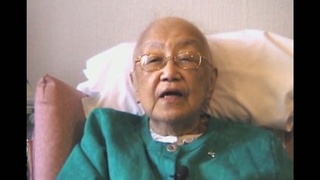Interviews
School held emergency drills at the start of World War II
We were already going to war with Japan, and I would hear about it, you know, we would hear about it, we were worried I guess, my father and mother were worried about it, just like the current fears of the Muslims or the Hispanics being sent out. So, but meanwhile, we also, as children, when we had the sirens go off every once in awhile for drills, we were assigned... all around the school were orange trees, we were assigned to a, each 3 or 4 children were assigned to an orange tree, So, we had to know which orange tree is our orange tree to go hide under. I don’t know how the orange tree was going to protect us. But meanwhile, that was it.
Date: September 15, 2017
Location: California, US
Interviewer: Jennifer Cool
Contributed by: Jennifer Cool, Matthew Purifoy





